Discover Rome’s History Through Art
Walking along Rome’s picturesque streets and alleyways paved with time weathered cobblestones and ivory-covered arches, you’ll find yourself face-to-face with the fabric of the city’s historic heart. These cobblestones and ivory of course have about them the air and feel of history and they are just the right surface to connect ancient with present day Rome. The more you wander, the more you’ll notice that the ‘must-see’ tourist sites are displaying far more than architectural excellence and beautifully crafted artworks. Instead, creativity here has been granted a license to flourish, but to flourish with a purpose.
Between the Vatican City, the Trevi Fountain, Colosseum and Roman Forum, the Pantheon, and Castel Sant’Angelo, you may notice that their art and architecture are framed with the ideological vines of bygone times. These vines are prone to an ingrained emphasis on preserving history! If you pay close enough attention to these artworks, you’ll discover a new perspective on Rome’s history; its significant dates and heroic figures who’ve shaped Rome’s past and now!
While researching the relationship between Rome’s art and history, I realised the necessity of writing in chronological order of date. Writing in accordance with historical date has provided a clear narrative arch of Rome’s history; an arch that comes to life through the Roman’s craftsmanship, paintings and mosaics.
Rome’s History | The Roman Forum & Palatine Hill
First nucleus of Imperial power
For this reason, I start with the Roman Forum and Palatine Hill for according to ancient legend when the brothers Romulus and Remus founded these areas in 753 BC; they established the Roman Kingdom. Indeed, present day Rome stands tall on the history that after a rising conflict Romulus killed Remus, named Rome after himself, quickly became the first King of Rome while turning the Roman Forum and Palatine Hill into the first nucleus of Imperial power and the most important place in Rome.
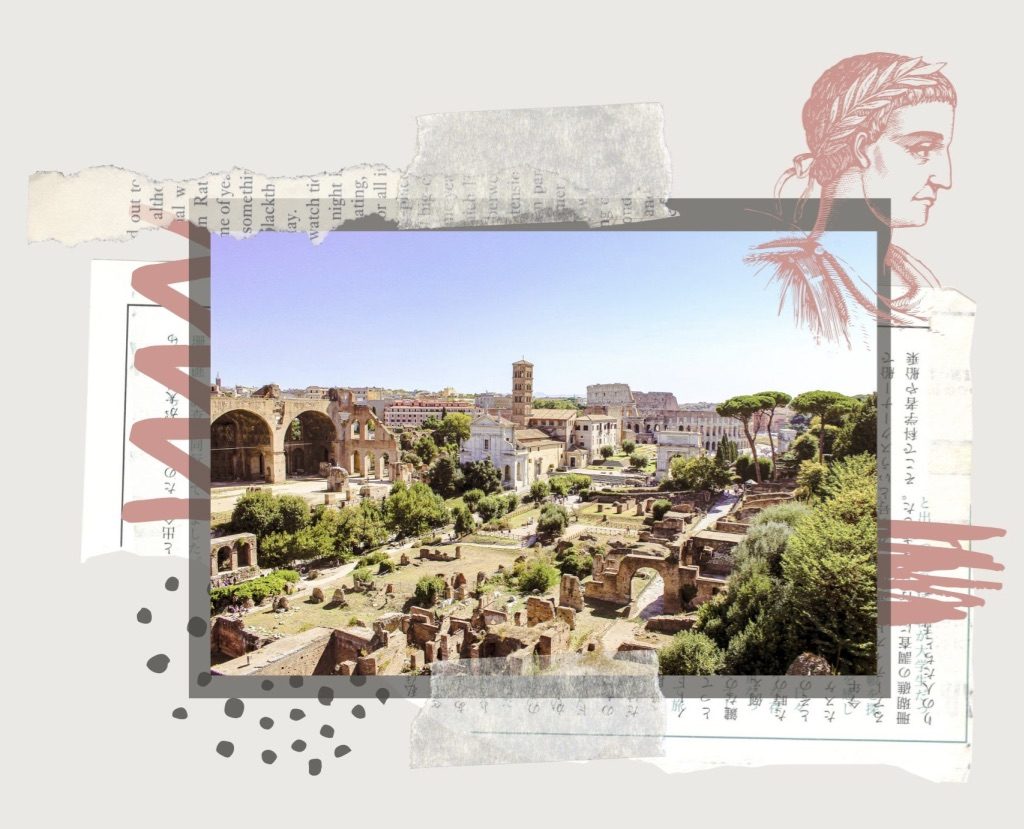
Religious worship
Indeed, the ruins provide a vivid insight into the Romans’ progressive systems of government. The architectural structure and design of the complex show that Roman citizens utilised this space for religious and political practices. This design was and still is oriented northwest and southwest. This places the Temple of Divus Lulius (Julius Caesar) and the Arch of Augustus at both entrances. The Temple of Divus was the only temple to be entirely dedicated to the cult of a comet. The Romans believed a ‘comet star’ to symbolise ‘new birth’ and ‘divinity’.

Allegiance to Emperor
This belief in comets arose after one appeared following the murder of Julius Caesar in 44 BC. This was at the same time Augustus became Emperor. These architectural masterpieces highlight the ancient civilian’s worship of Augustus. It also highlights their prayers for the continuance of the Roman Republic of which Augustus delivered. However, I believe Augustus also used architecture as a shrewd form of ideological propaganda. For they continue to narrate his story according to his heroism, divinity, and excellence! According to Doctor Jessica Ambler, arches marked victories, depicted wars, and described military life. And these are doing just that; they are displaying the emperor’s achievements.
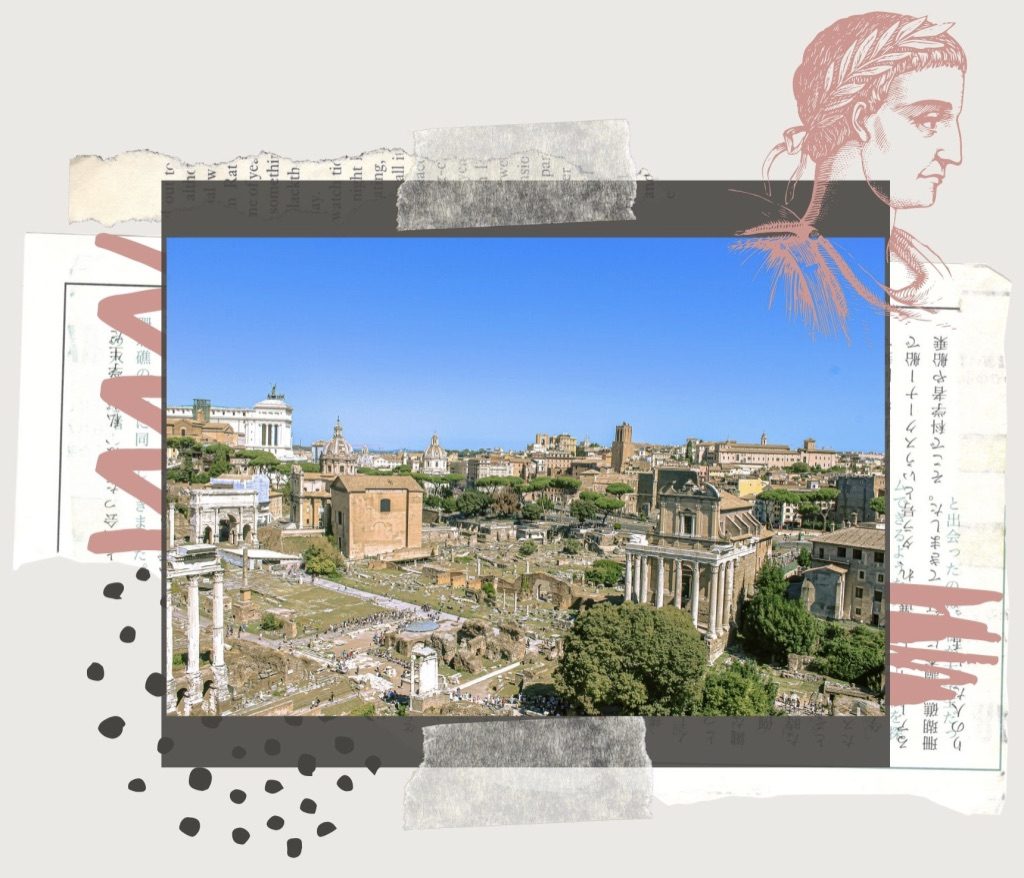
The remains of other temples are dedicated to the god Saturn and commemorate deceased emperors as deities. The Romans associated Saturn with wealth and power. So, to have artwork that places gods and emperor’s on equal footing emphasises the Romans’ efforts to and preoccupation with increasing their fame and glory. This was imperial cult worship, the formal religion and a sign of allegiance to the emperors of Rome and their political and diplomatic gestures.
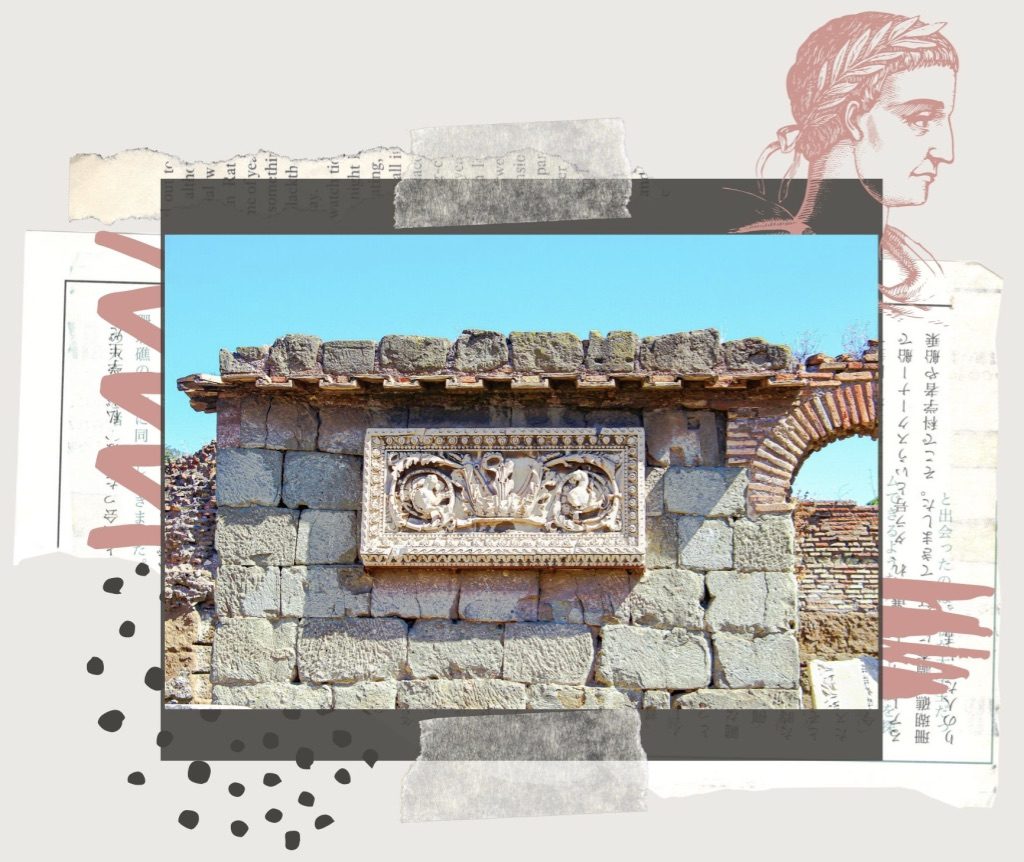
Rome’s History | The Colosseum
Military prowess & gladiator strength
While the Roman Forum and Palatine Hill sparked a surge in religious and political movements, the Colosseum was an oval emblem for Roman strength, prowess and cruelty. Constructed in 70 AD under Emperor Vespasian’s direction, the Colosseum held 50,000 spectators; 50,000 individual Romans who held to the belief that fortitude, courage and allegiance meant killing thousands of people whom they saw as criminals or lesser than themselves, this included the hunting of animals. On top of this, the Colosseum’s arena was used to display the imperial army’s power and capability and executions and re-enactments of famous battles; both of which were designed to demonstrate the Emperor’s authority and rule!
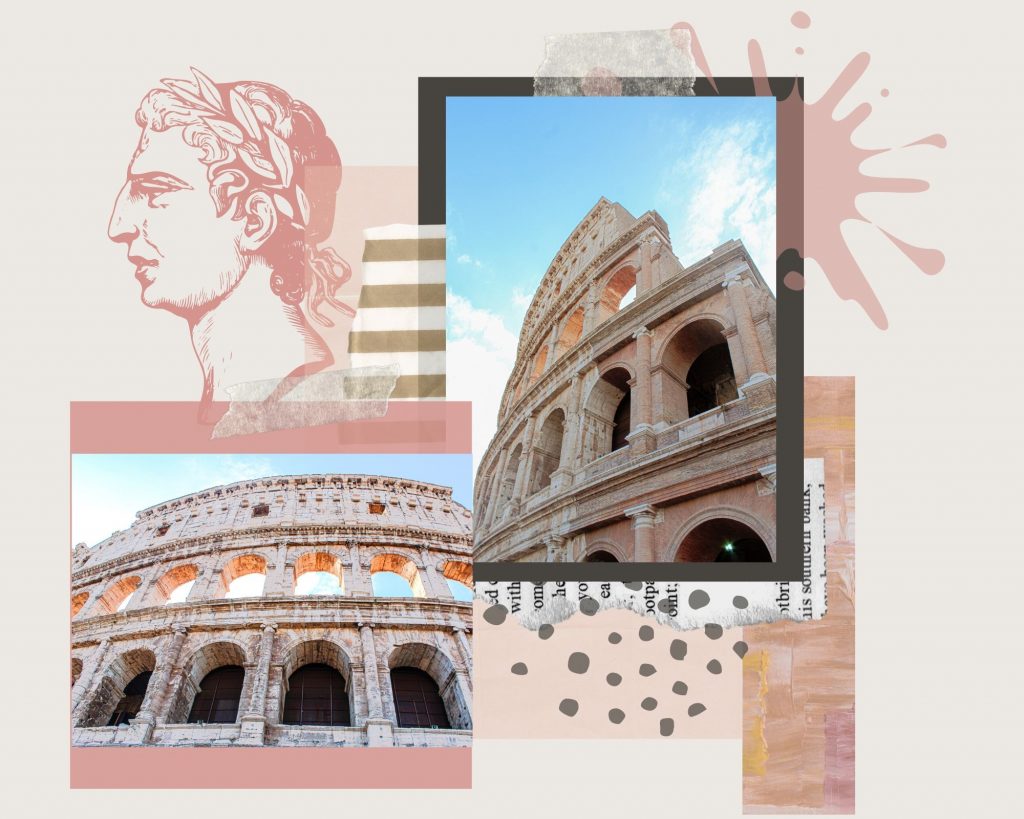
The art found at the Colosseum encompasses a broad spectrum of media. This includes marble, paintings, mosaics, and silver and bronze work. According to Doctor Jessica Ambler ‘art was produced in the service of the state‘. And the artwork on show at the Colosseum depicts both gladiators slaying the Empire’s enemies and celebrations of victorious military campaigns.
Roman society
In keeping with Roman tradition, these gladiators are represented as being youthful, idealised, handsome, and strikingly strong like young athletes. It is beyond clear that the Emperor’s gladiators were the crème de la crème of Rome; those to whom everyone else aspired and those to whom the Emperor saw himself, his power and supremacy reflected. Even the pottery at the Colosseum incorporates spears, arrows, gladiator helmets and shields in its decorations. This is a fantastic preservation of Imperial ideology and doctrine. Never have I been so close to the truth of Rome’s history. Those who lived during the Roman age created and used these objects. They show just how vital military prowess and gladiator strength was in society! For it preserved the status quo, boosted morale and defeated and protected them from their enemies!
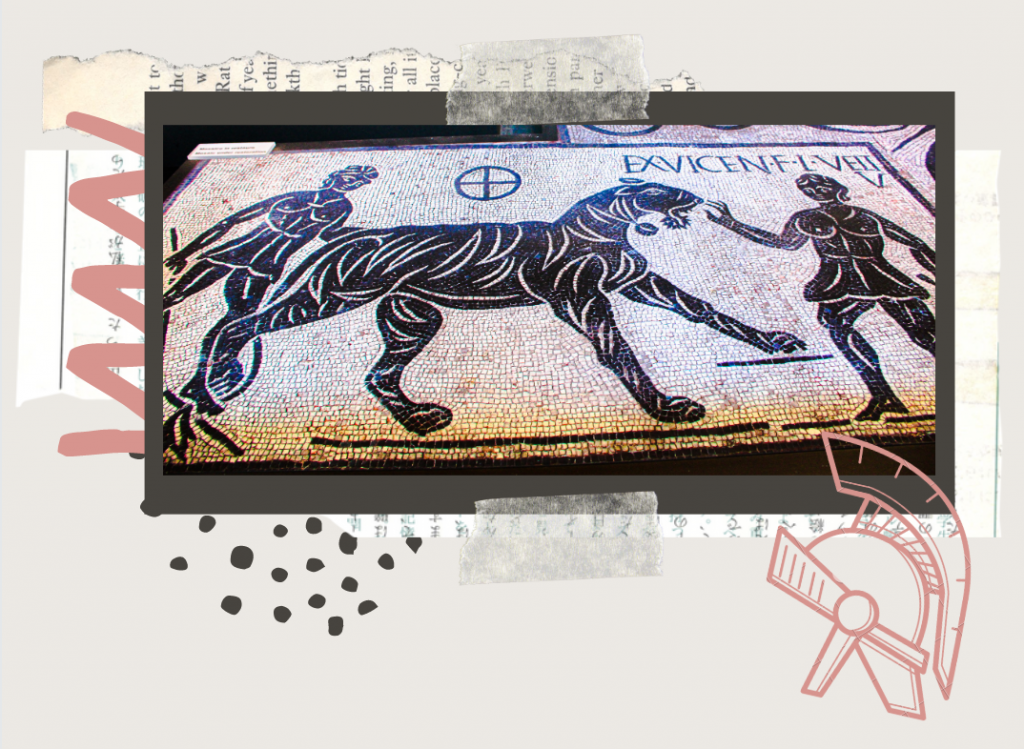
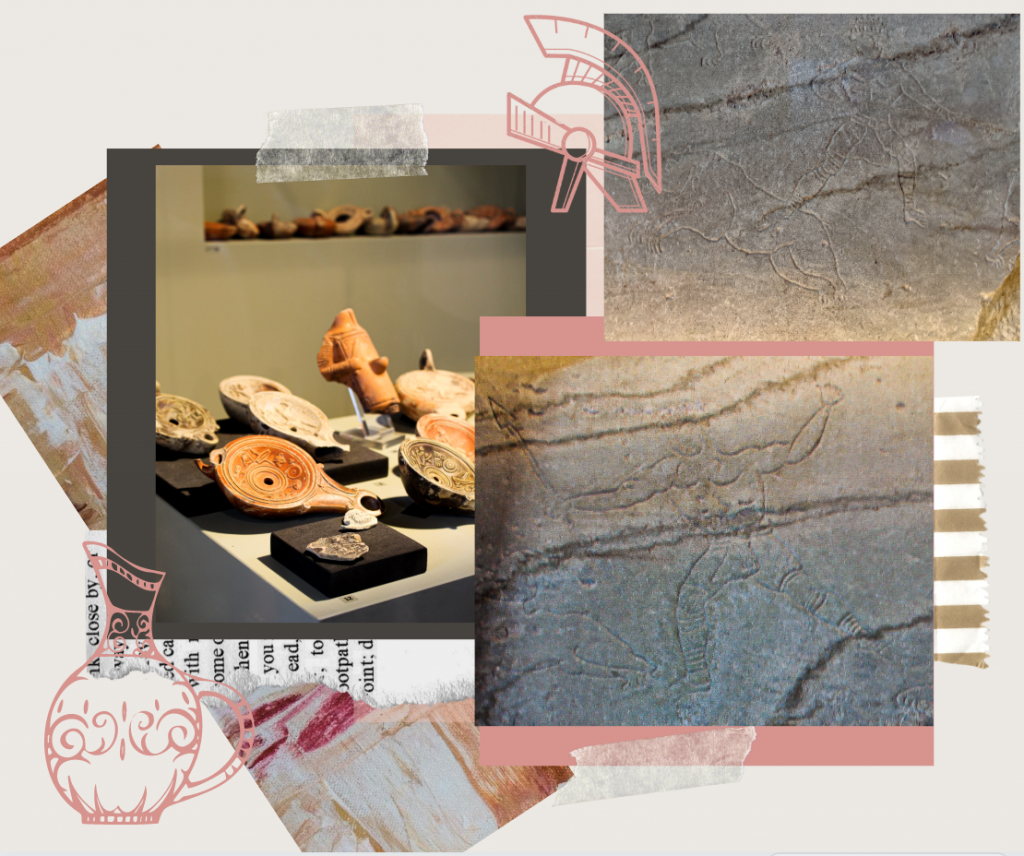
Social & community goals
The portraiture heads presented at the Colosseum also emphasise the social and community goals of the Republic; hard work, age, wisdom, being a community leader and soldier. Depicted in the Roman style of hyper-naturalistic features, these leading figures have large heads and noses. They also have extra wrinkles and furrowed brows, which Doctor Ambler argues shows their acquired wisdom.
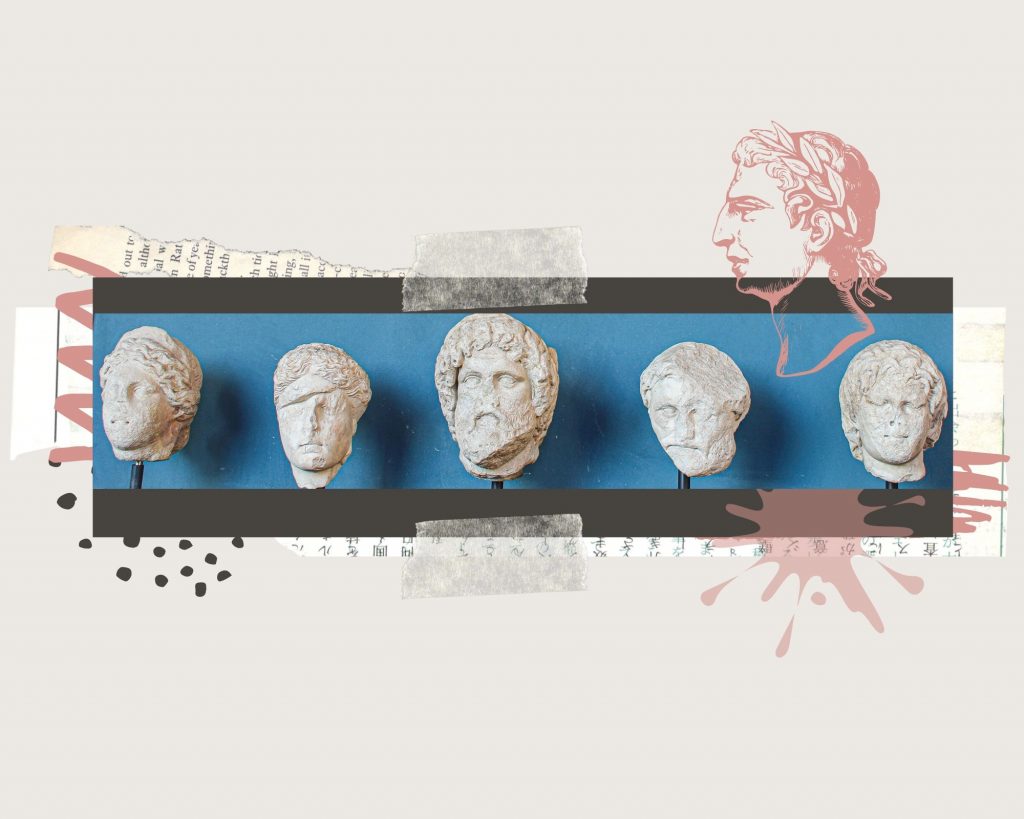
Rome’s History | Castel Sant’Angelo
Introduction of Christianity
Originally built by Emperor Hadrian, Castel Sant’Angelo is like a layer of cake containing over 1,800 years of history. This history includes the buildings’ presence as a Roman tomb and mausoleum for Hadrian and his family; as a Renaissance prison; and as a key military fortress for the Vatican. And with these changing times, Castel Sant’Angelo is key to introducing Catholicism into the Roman culture. This has been for centuries captured by the castel’s lavishly painted papal apartments.
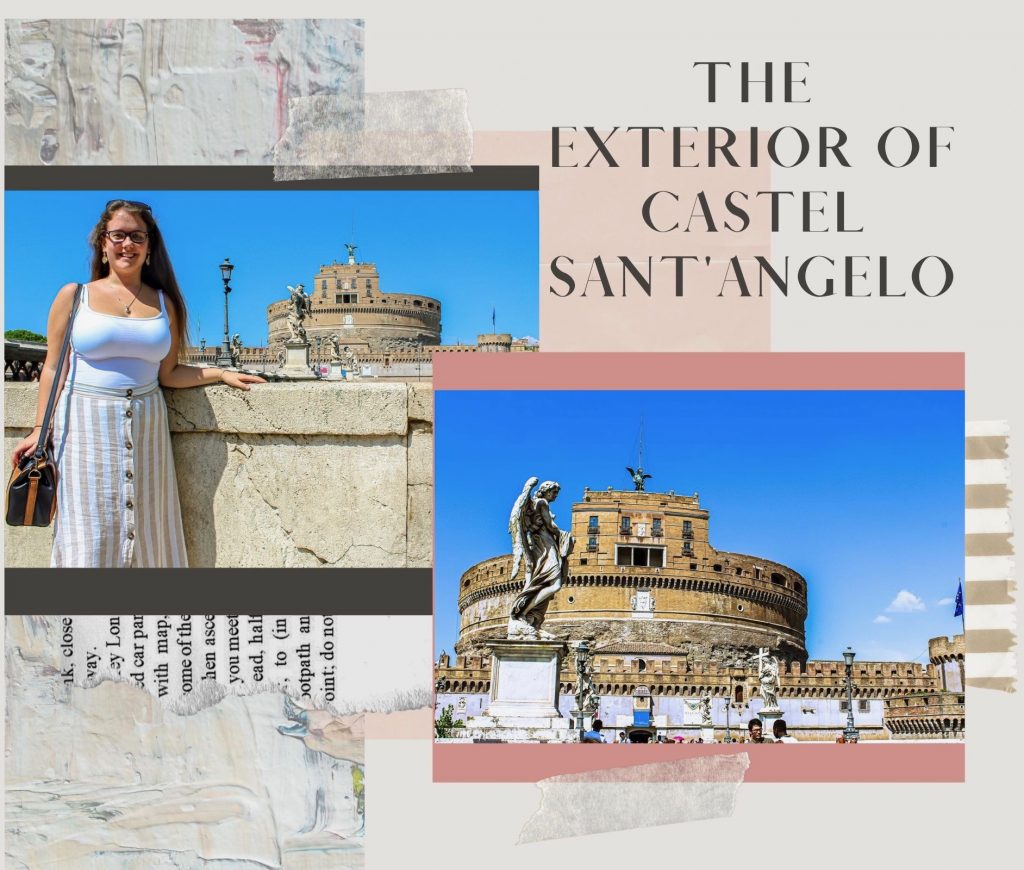
These apartments are so lavish as to visibly communicate the dominance of the Roman Church! During the sack of Rome in 1527, Pope Clement VII took refuge in Castel Sant’Angelo and during his stay he decorated it with perfectly preserved frescoes of ancient and medieval tales. The Pope utilised these popular myths in the attempt to re-establish and further the church and its Catholic faith. For example, the ceiling in the Sala del Perseo depicts Perseus killing Medusa which was used as a metaphor for the efforts made by the Popes to eradicate heresy and in particular Lutheranism. They assigned the role of Perseus to St. Michael the Archangel who is portrayed in a fighting pose, defending the Pope and the Catholic doctrine!
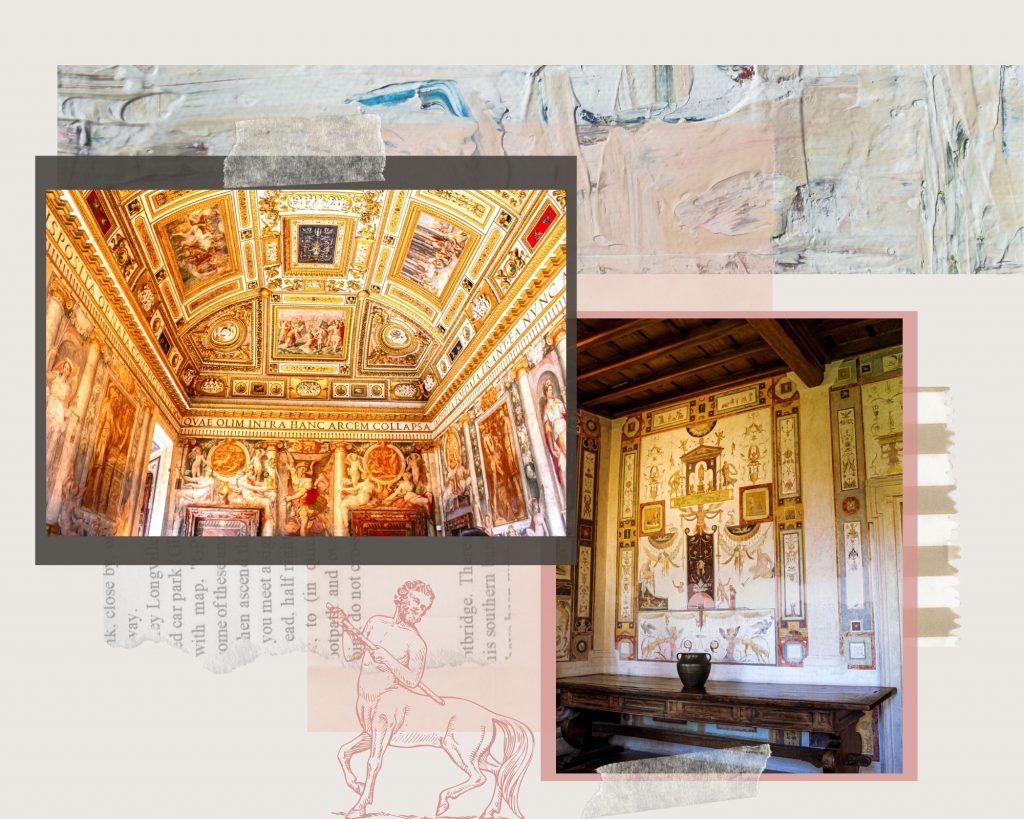
Christian Church as rulers
In another room is an illustration of Alexander cutting the Gordian Knot. This is often used as a metaphor for an intractable problem which can be solved by finding an approach to the problem that renders the perceived constraints of the problem moot. According to legend, an oracle had declared that any man who could unravel this elaborate knot was destined to become ruler of Asia. Alexander later conquered Asia, thus fulfilling the prophecy. For the Popes to equate themselves with the knot and Alexander they are suggesting that they are the rightful rulers of Rome. And with this, Catholicism was firmly rooted and established within the Roman culture!
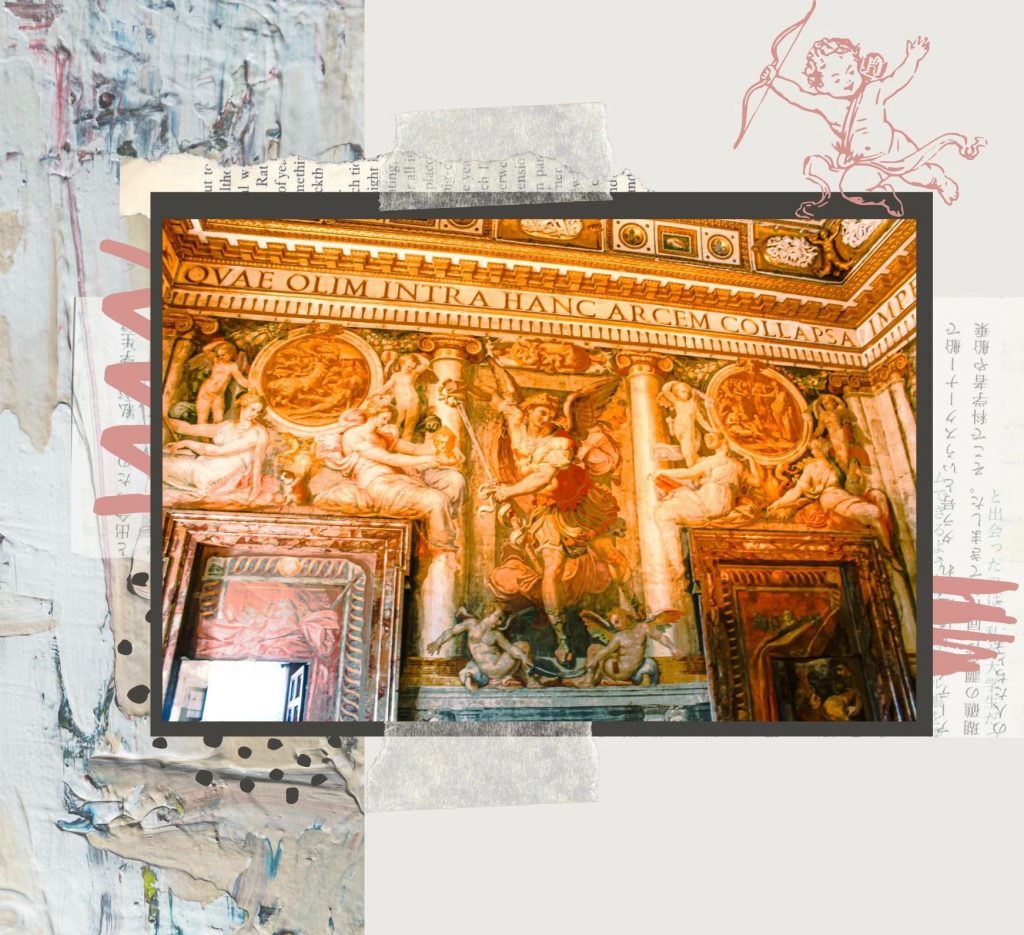
Rome’s History | The Pantheon
Architectural discovery
With the construction of the Pantheon came an age of architectural discovery and genius! The Pantheon is one, if not the, most iconic and instantly recognisable Roman building. Even after 2000 years, it is still standing in its almost original design. Its vast concrete dome and monumental portico comprising a pediment and rows of gigantic Corinthian columns are an unique and striking reminder of the architecture of the Great Roman Empire. Its spectacular design, proportions, elegance and harmony speak volumes of the Romans’ love of grandeur, wealth and divinity across the world. Even Michelangelo saw the Pantheon as a place for and the work of angels, and not humans! It’s clear that the Romans desired to be eternal, divine, and powerful! They surely accomplished this by designing and achieving architectural excellence before unseen!
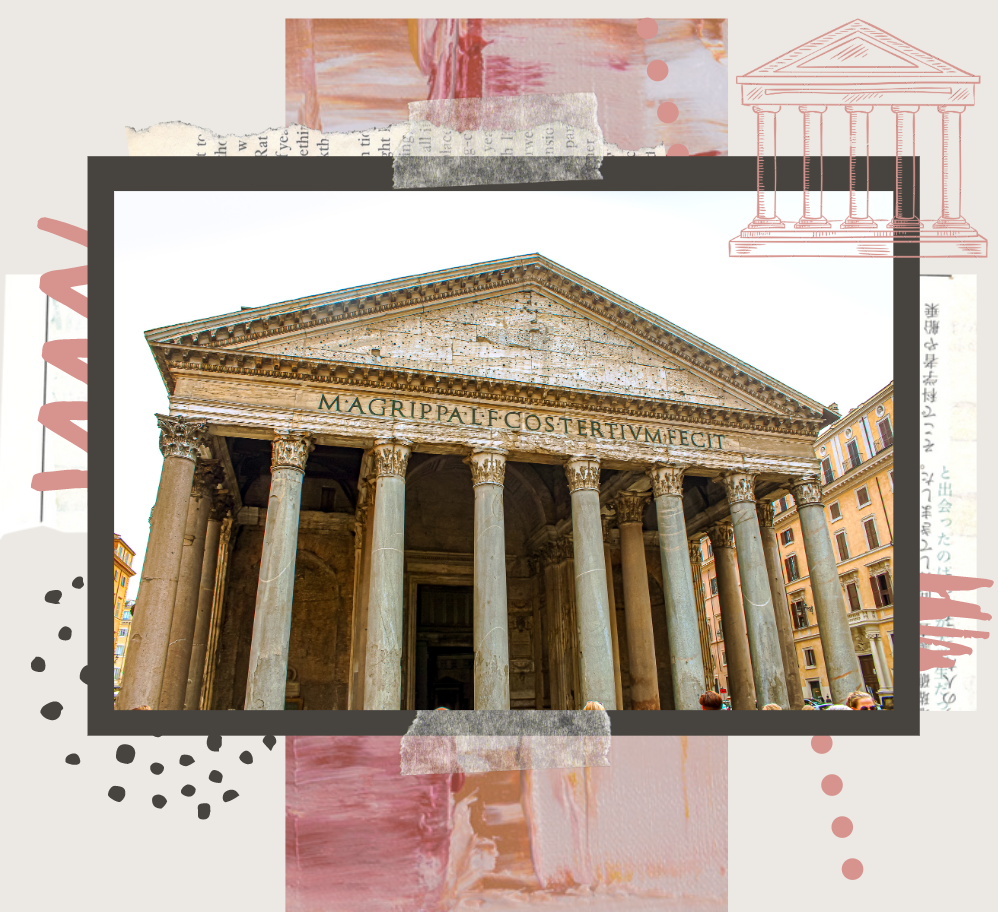
Romans as divine
Indeed, the Roman etymology of Pantheon emphasises the Romans’ intention when building this masterpiece. Loosely translated as the ‘Temple of all the gods’, as pan means ‘all’ while theos refers to ‘gods’, the name originally may have come from the quantity of statues placed at the Pantheon. However, many historians believe that the oculus at the top of the dome ceiling, which was and is never covered, was intentionally designed to symbolise the arched vault of the heavens.
Interestingly, according to locals there’s a lighting effect that can be viewed on April 21st. At midday, the sun strikes a metal frill above the doorway and saturates the courtyard outside with light. The Romans celebrated April 21st as the founding date of the city, and the impressive sight of their Emperor standing at the entrance to the Pantheon surrounded by light coming from inside would have seemed to have been equating their Emperor to the level of the gods! Whether this happened, the outstanding architecture and its dance with the sun on the 21st of April continues to narrate the Romans story that they were descendent from the gods and embodied their divine power.
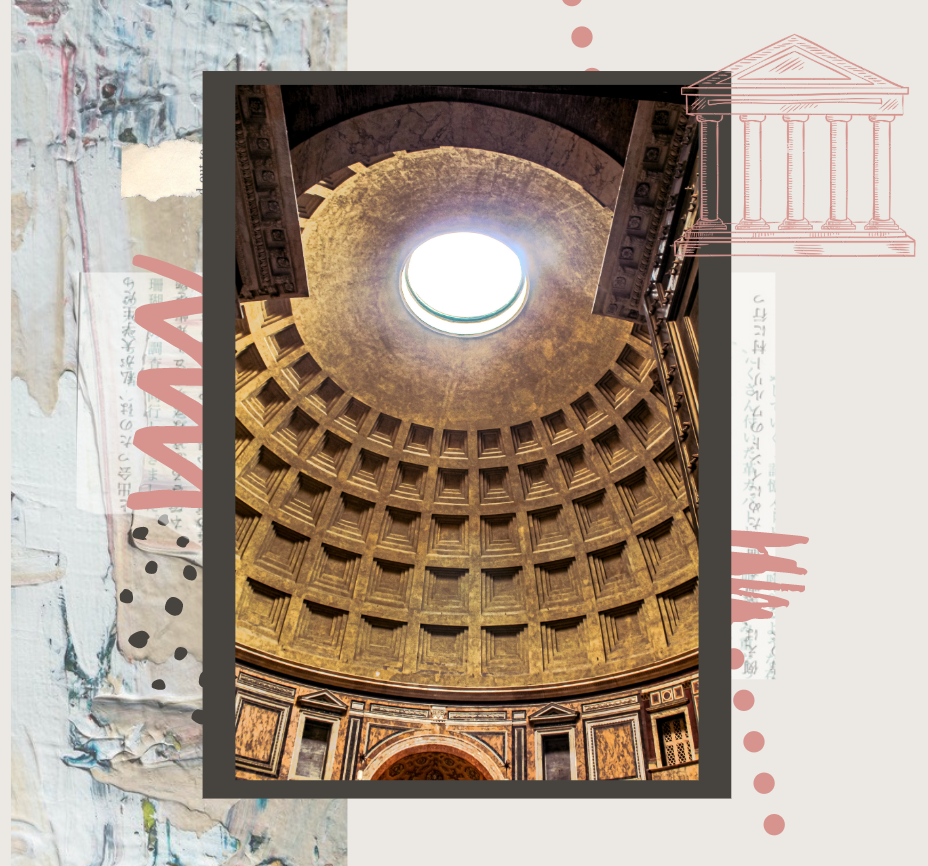
Rome’s History | The Sistine Chapel
Renaissance Rome
Taking a private tour of the Sistine Chapel was beyond worth it. It was fantastic to be among only a handful of other people in the chapel. There was ample room to walk around, gaze and marvel at the outstanding paintings. Every nook and cranny of the chapel was visible and with that came a detailed narrative of Renaissance Rome; the flourish of renaissance painters, traditionally biblical imagery and the establishment of the papacy! The chapel takes its name from Pope Sixtus IV who restored it between 1477 and 1480. Since that time, the chapel has served as a place of both religious and functionary papal activity. Today it is the site of the papal conclave which is the process where a new pope is selected.
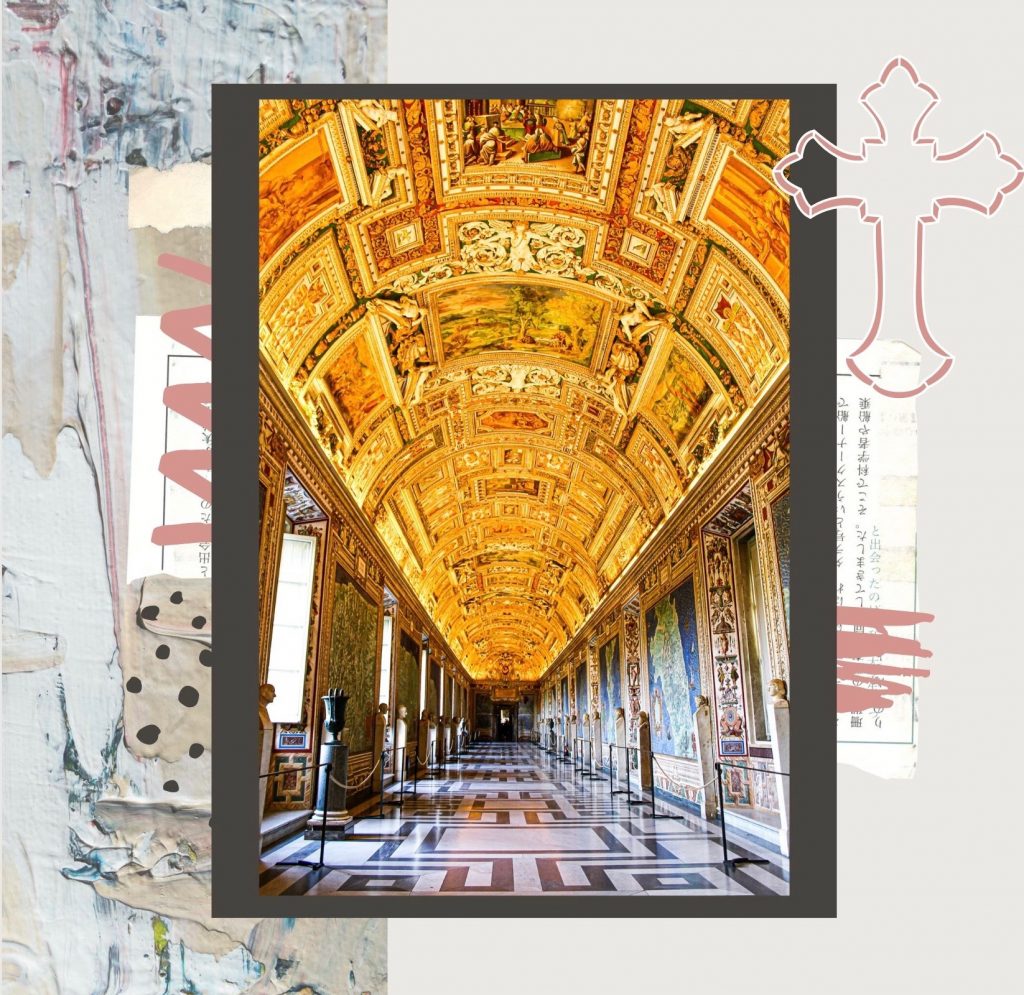
The power of the papacy
Sixtus IV instructed numerous Renaissance painters to create a series of frescoes depicting The Life of Moses and The Life of Christ, which are offset by papal portraits; God’s representatives on earth. While Pope Julius II commissioned Michelangelo to paint nine pictures showing God’s Creation of the World, God’s Relationship with Mankind, and Mankind’s Fall from God’s Grace in 1508-1512. When looking at the ceiling, my eyes naturally gravitated to these papal portraits. Due to their three-dimensional quality, they appear to be much more lifelike than the other religious figures in the frescoes. Despite being smaller, their darker tonality and detailed physical features evoked a weightier appearance and an atmosphere of authority.
This is further emphasised by the fact that these papal figures are encased in arches that distinctly separates them from each other and from other paintings. This places prominence on each one and reaffirms their religious import. Furthermore, the location of each portraiture below these religious scenes suggests to visitors that these papal figures are the power on earth that enacts God’s final and eternal judgement on humanity; deciding whether an individual receives entrance into heaven or hell.
Finally, the papal commission of Michelangelo’s The Last Judgement further carries these religious teachings as it was painted during an important historic event, the Sack of Rome in 1527. At this point, the decorative scheme displayed a consistent iconographical pattern which is further emphasised by the apostolic succession.
Rome’s History | St. Peter’s Basilica
Christianity is eternal
The splendour of St. Peter’s Basilica is in keeping with its status as the capital of Christianity and of the Church State. According to Catholic tradition, it was the Emperor Constantine who instigated the construction of the first basilica on the site of the tomb of the apostle Peter. St. Peter’s tomb is supposedly directly below the high alter and many Popes have been interred here since the Early Christian period.
The architectural and decorational elements reinforce the Christian teachings and thousands of tourists flock there each year to see 10,00 square metres of mosaics that reference St. Peter and other saints, the statue of Constantine the Great by Bernini and the Navicella degli Apostoli by Giotto. The most impressive of these are the mosaics above the Michelangelesque dome which are vibrant, elastic and imposing. Standing below these, I was within the heart of Christianity and the endurable quality of the mosaics evoked an idea that they and Christianity will last for eternity.
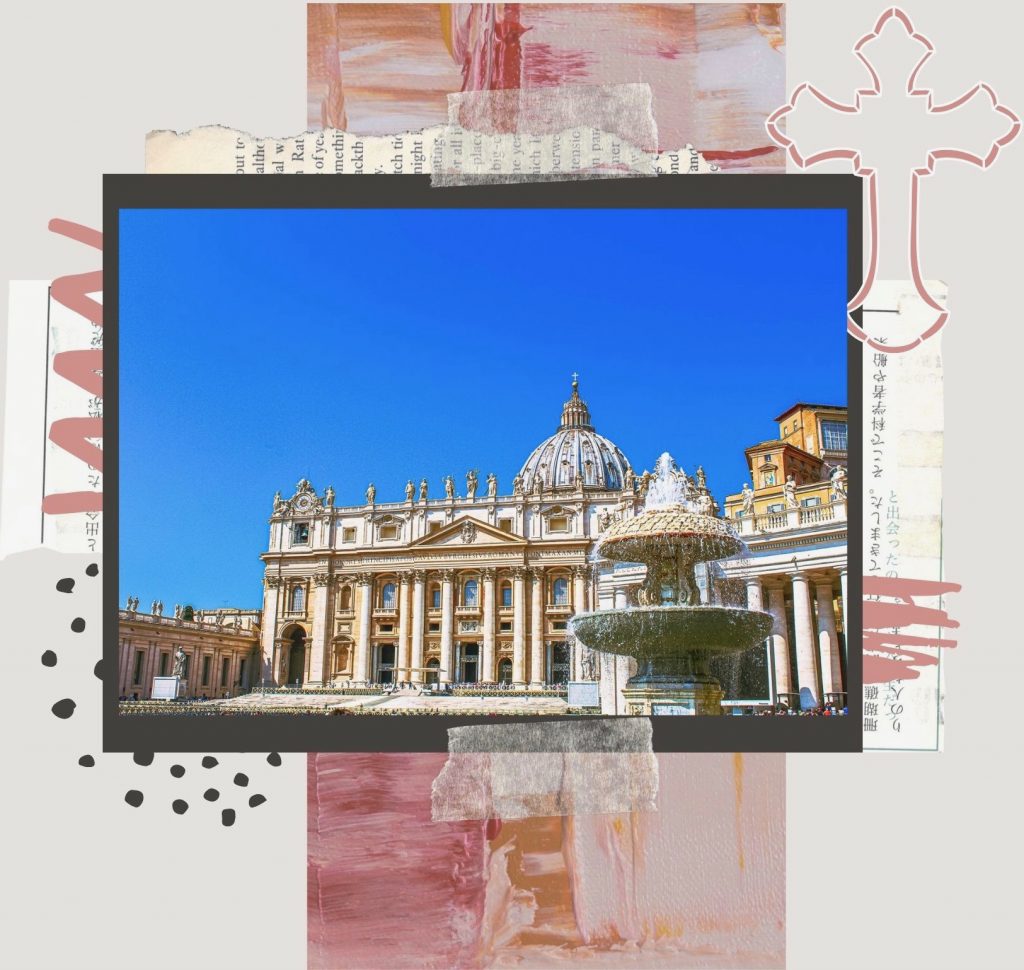
Inspiring congregations
From the ninth century onwards, St. Peter’s Basilica was inextricably linked with the fine arts of architecture, sculpture, and paintings. Indeed, the church became the greatest sponsor and patron of the arts throughout Europe and it commissioned many types of decorative art, including the mosaic and icon-painting art within the Basilica. All these beautiful designs of religious art were created to inspire religious congregations with the Christian message, especially the scenes from the Book of Genesis in the Old Testament.
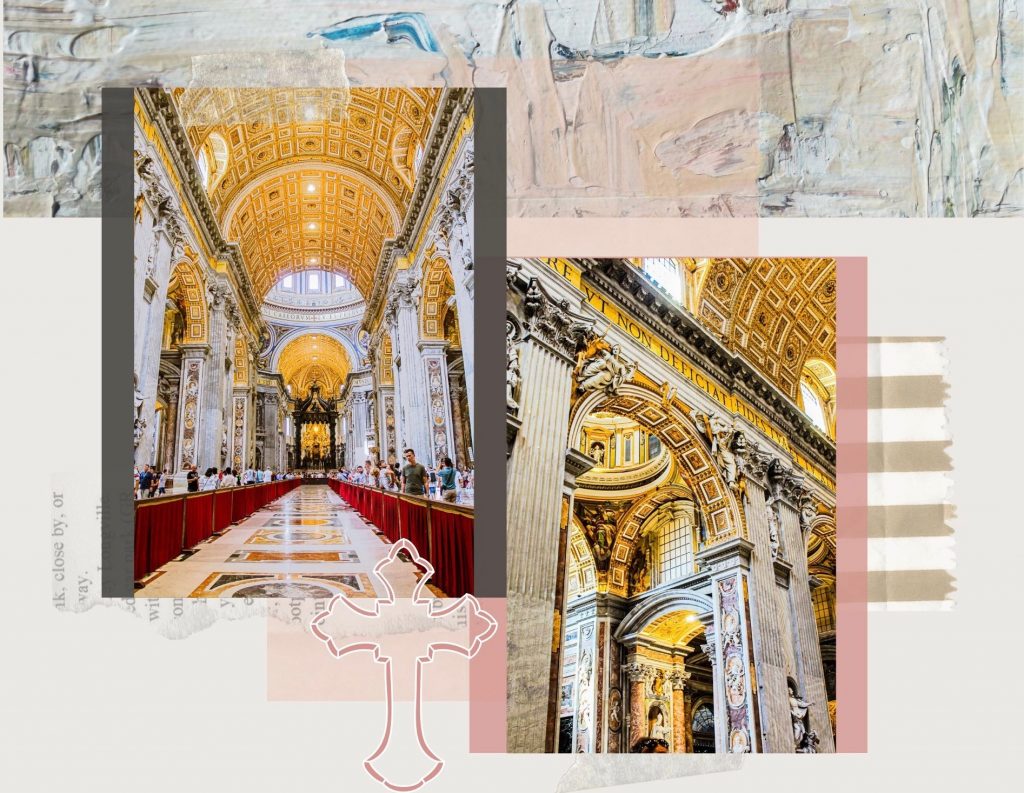
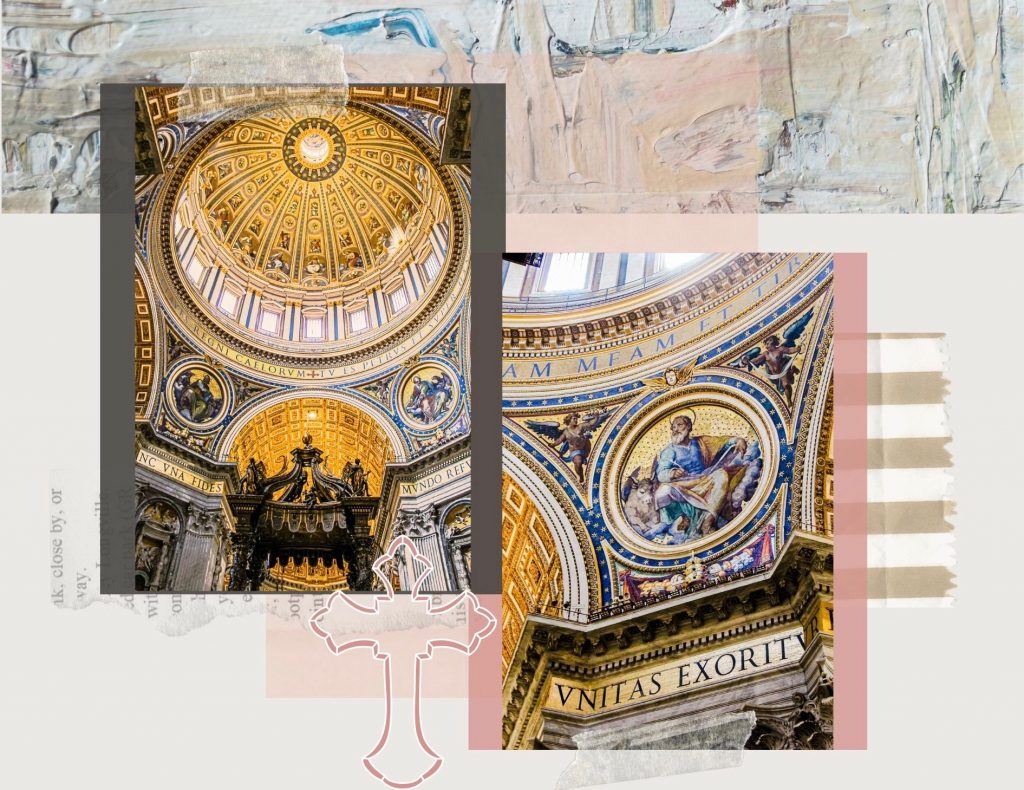
Rome’s History |Trevi Fountain
Rome’s illustrious relationship with water
The Trevi Fountain was specifically built upon the terminal point of the Acqua Vergine, one of Rome’s most important aqueduct that transports drinking water to the Eternal City. While the fountain is famous for its Baroque art, it is the whimsical and mythical sculpted figures that make the Trevi Fountain a unique symbol of Roman art, sensuality and power; all of which draw upon its historical associations with providing drinking water to the Roman people. This can be seen through its homage to goddesses of the natural world and earthly elements such as Diana, the goddess of childbirth and women, Egeria the water nymph and Virbius, the woodland god.
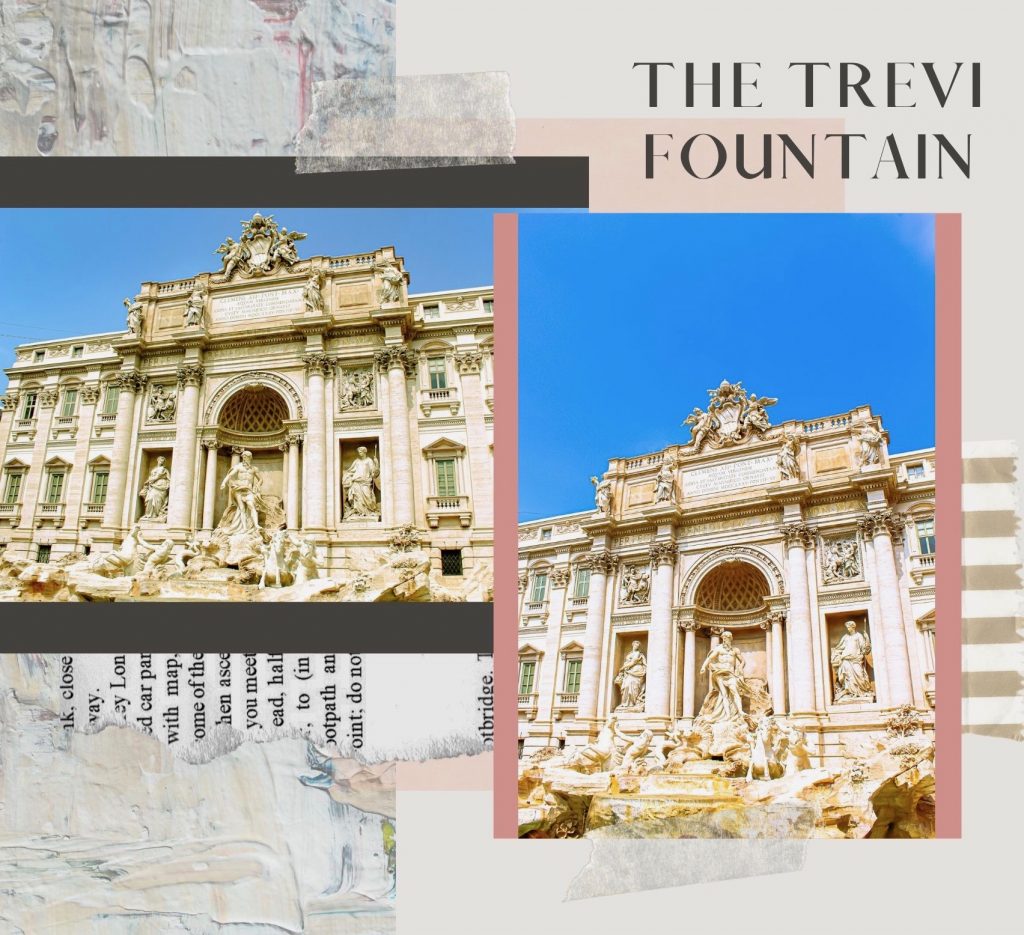
The Romans have had throughout history a unique and illustrious relationship with water and the intricate depiction of Oceanus, the god of water, in the centre niche offers an insight into this. Indeed, the light and shade effects on the marble makes the wind seem to bellow through the drapes and locks of the statues, emphasising the waves and creating an extraordinarily intense sense of water movement! Indeed, the water flows over the artificial rocks into a large semi-circular basin that represents the sea.
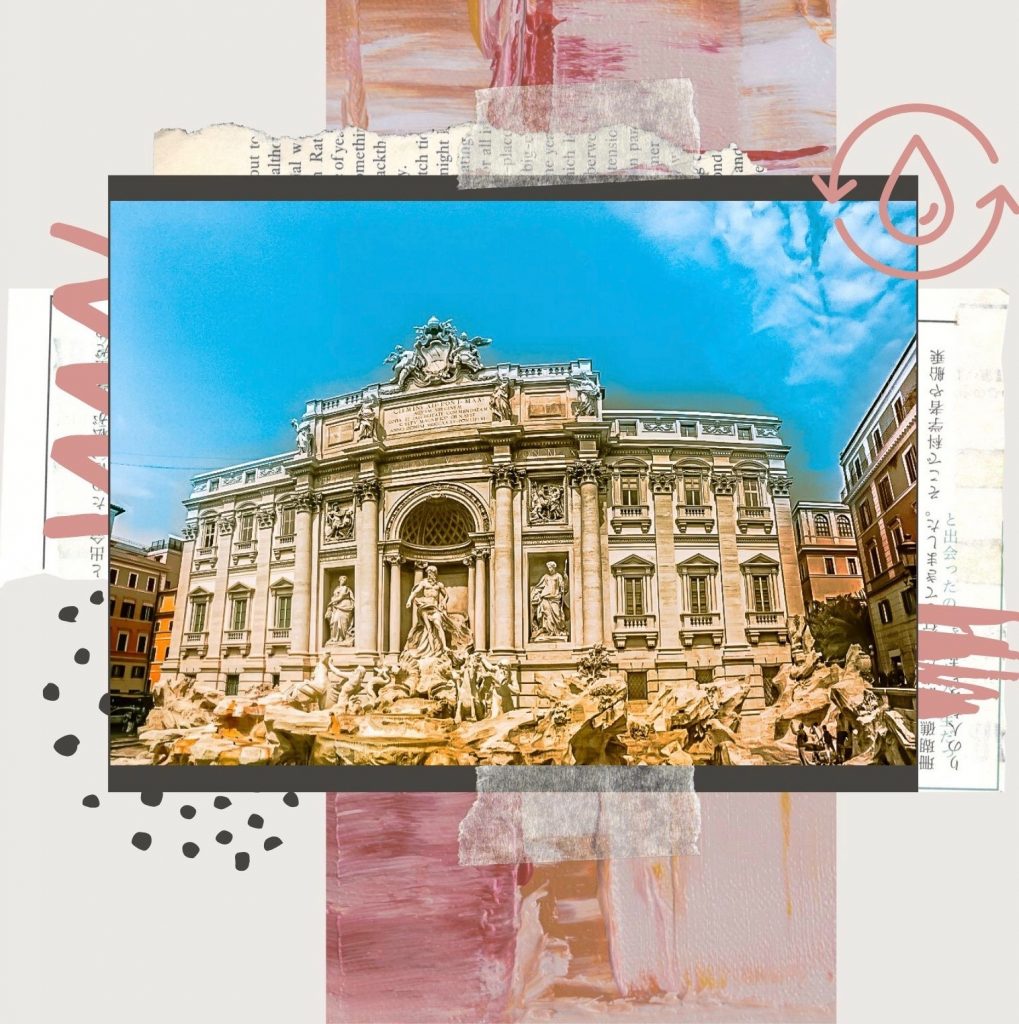
Catholicism vs Protestantism
Additionally, the inclusion of Baroque architecture was encouraged by the Catholic church. The Catholic church loved its highly ornate and extravagant style. This became the means to counter and diminish the simplicity and austerity of Protestant architecture and faith! The fountains movement, exuberant detail, deep colour, grandeur and surprising lifelike reality achieves a sense of awe. It also celebrates those who funded the project.
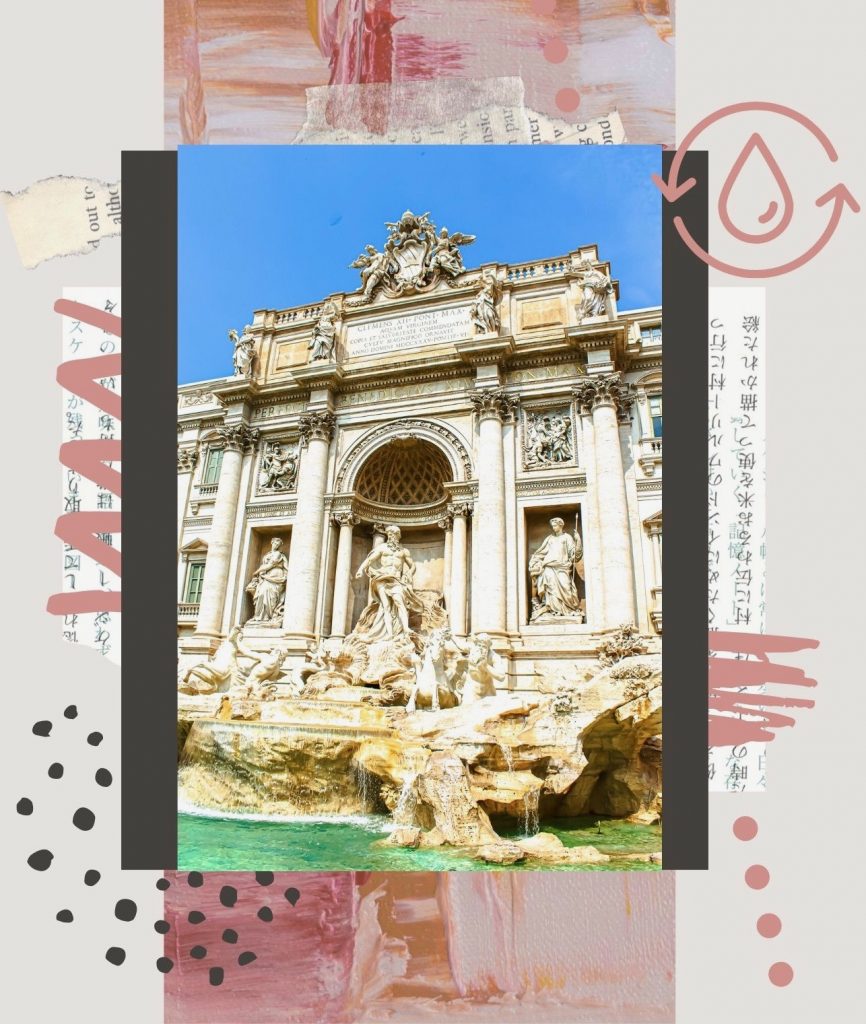
—————————————————
Closing Thoughts…
Rome’s history is intricately bound up with its paintings, architecture, statues and mosaics. As I mentioned at the beginning, creativity and art in Rome have been granted a license to flourish. But to flourish with a purpose. That purpose is to eternally narrate Rome’s history for centuries to come. To narrate Rome’s history through mediums that celebrate its triumphs and its architectural and religious movements.
If you liked my post on Rome’s history, check out my guide to the Baths of Caracalla. Alternatively, see my Rome 5-Day Travel Itinerary for more inspiration!

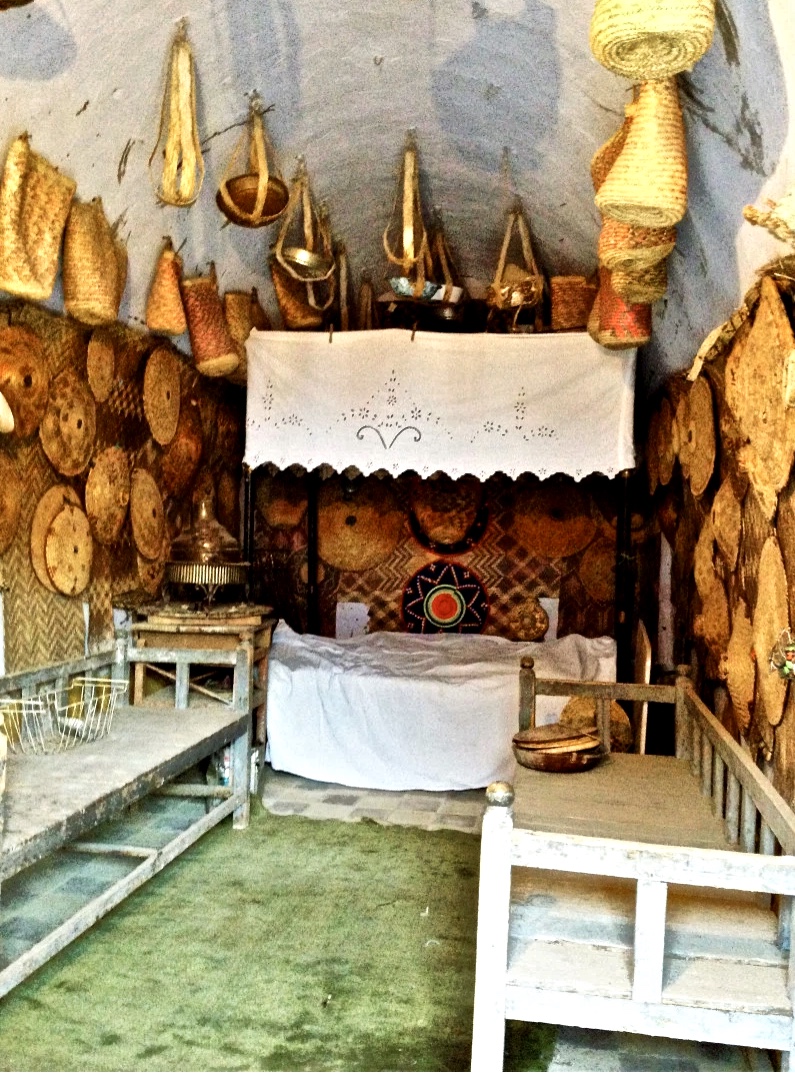


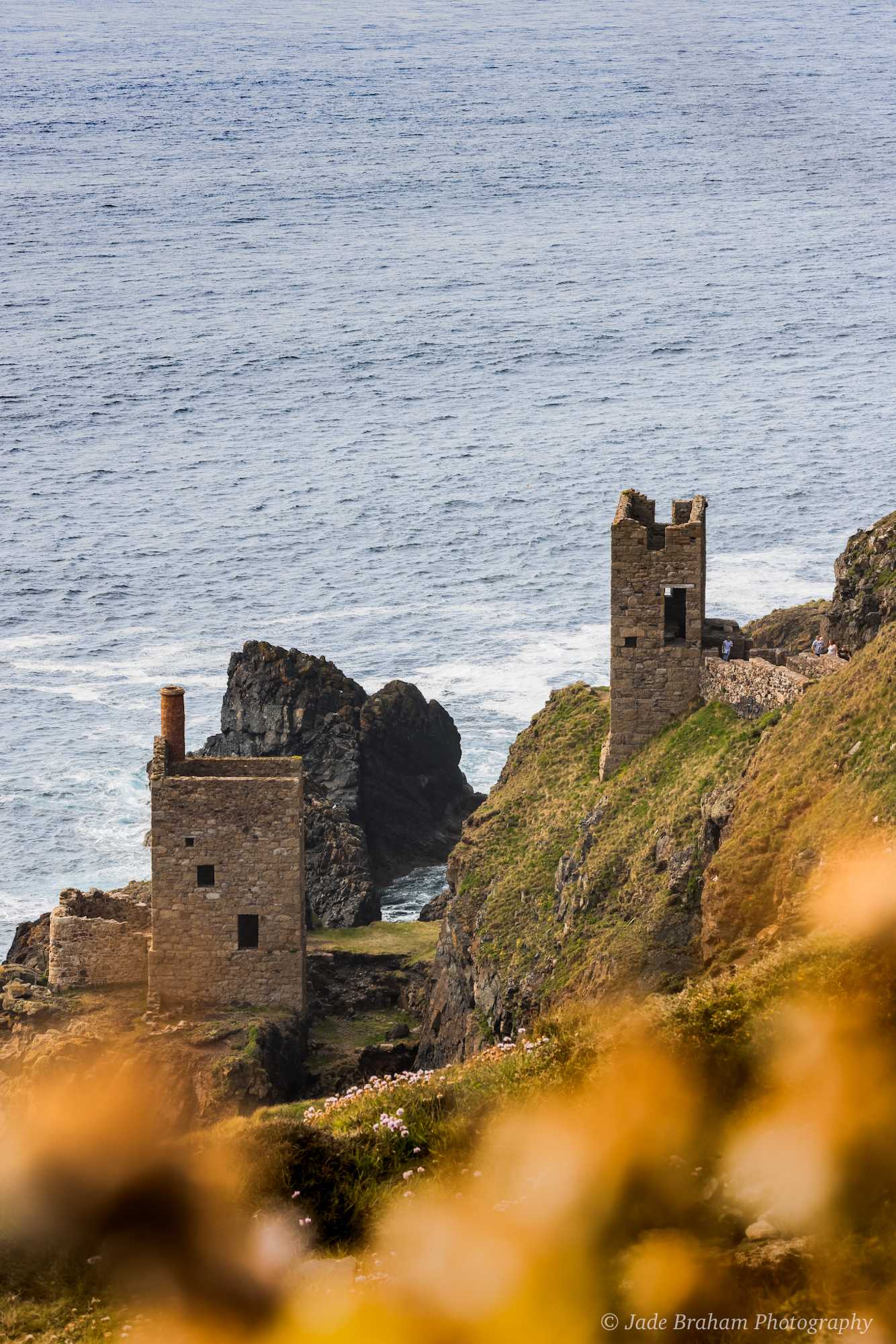
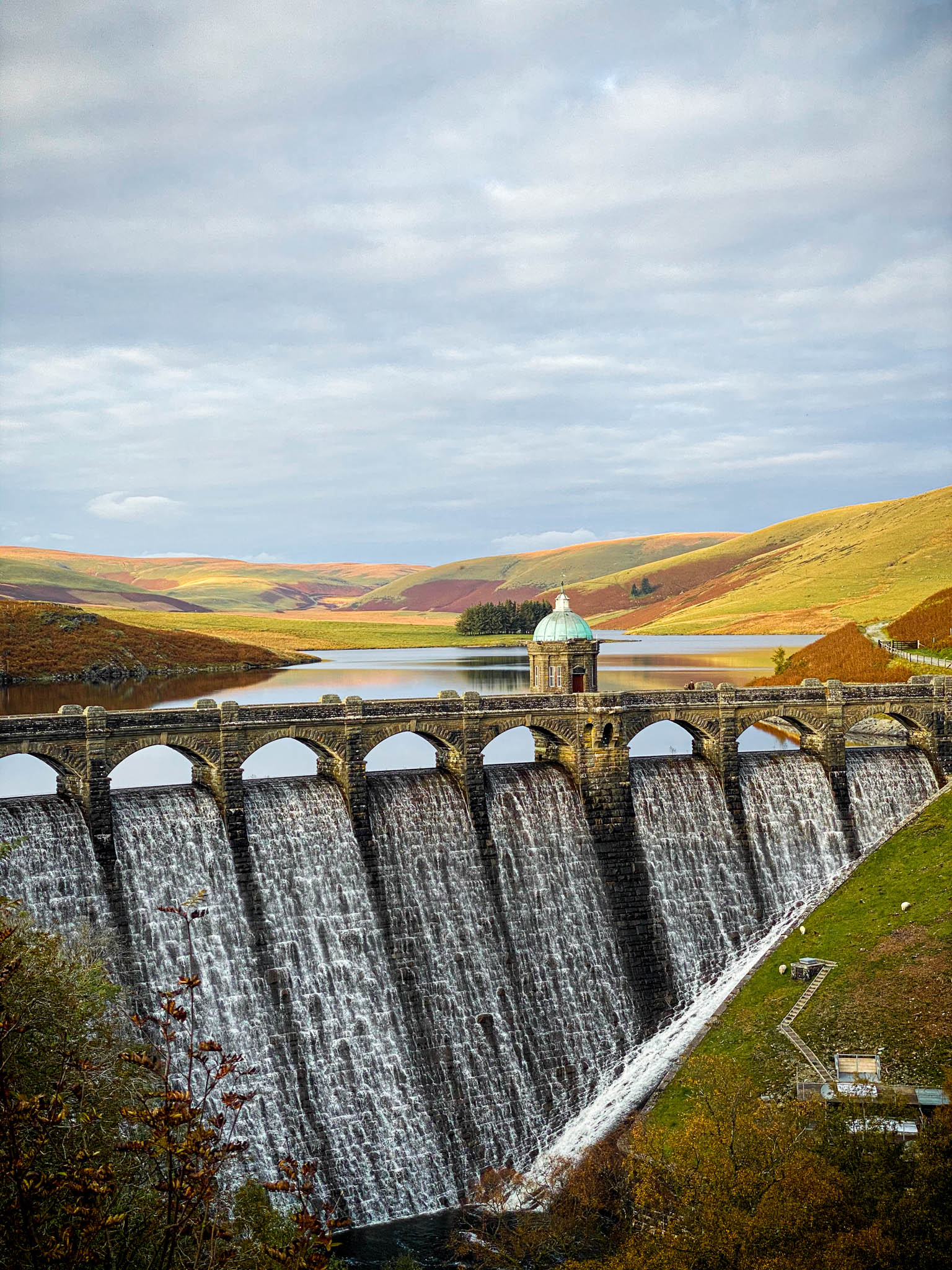
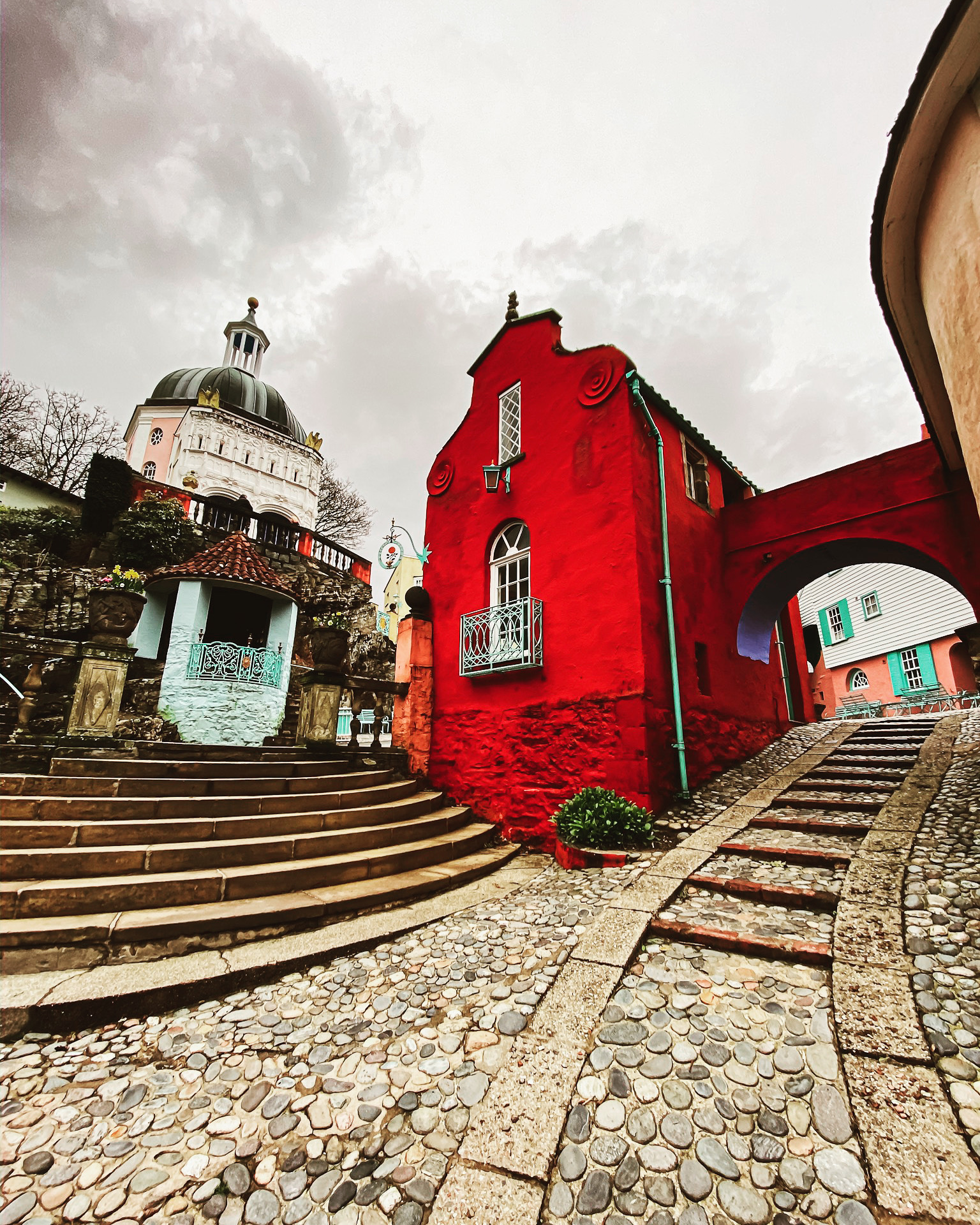
I love the photos, I have never been to Rome and the architecture and the history behind is definitely interesting to me and hopefully one day I get to experience it.
I hope you get to experience it one day too!
Rome is an outstanding city. That’s amazing you did a private tour of the Sistine Chapel. When I was there it was soooo packed, I almost just wanted to get out of there quickly.
It was more expensive but definitely worth it! We went back in after our private tour and it was utter chaos. We just ended up leaving because it was so crowded!
This is an amazing post! So well thought out and well researched. Rome has been on my bucket list for a long time (especially as an artist!), and I think your post just bumped it up to a higher priority. Thanks!
It is the perfect place for an artist! You’ll turn every corner and be there for ages painting! Everything’s so picturesque! I hope you get to go soon!
Rome has such a rich history and just marveling at these structures, paintings and statues would be an experience to treasure forever. I hope someday I can see all these in person.
Rome is an experience in itself and I truly hope you get to go soon! It’s one of those places you’ll never forget!
Very nice! My father has been there not long ago and he is telling us how great and beautiful that Colosseum is.
It really is! It’s so impressive and large!
Rome (Italy) has been my dream destination for decades. When we were living in England, I wanted to backpack to Italy on my own, for my 18th birthday, but my parents wouldn’t let me. I should’ve just gone without their permission. JUST KIDDING!
Your photos are so beautiful.
Thank you so much! I hope you get to go soon!
This was so beautiful and interesting to read. There are not enough blogs and articles about culture and history. I am missing Rome so much right now, thinking to actually book a short holiday there !
Hello, thank you for your kind words! That is precisely why I started blogging about travel through history and culture because there isn’t much out there! You should totally go to Rome and check some of these places out! They’re unbelievable and I know you’ll have a fantastic time!
Rome what an amazing place to visit. I love all your pictures too by the way, looks like you had a fab time
Its always been my ultimate dream to visit and revisit Rome.. its history is truly rich, full of art and faith. I am precise that every visit will be inspiring and reflecting.
As an Italian I can say that historical places are one of the best ways to appreciate and understand this country. Rome is the first city that must be visited through history
I completely agree! I’ve been to Rome twice now and I always learn so much when I am there!
The extravagance of architecture and design is truly prominent in Rome, and shows how powerful this city for thousands of years ago. Nowadays, only their religion Catholicism remains.
YES! Exactly, there is so much to be learnt from Rome’s architecture. So much more than just Catholicism!
I love history! Rome is definitely on the top of my bucket list of places to visit! There’s just so much history! Plus the architecture is beautiful.
Yes, there is so much history and I do love the architecture! It is quite something in real life.
Very informative and engaging article…I love reading history and this article is the best thing that I read today… Thanks for sharing 😇😇
Thank you so much! Your comment has made my day 🙂
Knowing more about the history of the city makes me more interested to visit it. Looking forward soon! Thanks for this.
As a geographer, I must say the post was very informative. I learned many new things.
Stunning, stunning photos! I absolutely love history and I’ve never been to Rome yet, so enjoyed reading this. It’s amazing how the Roman architecture has travelled far and wide to modern America. Did you go during off-season because there are no crowds at all. lol.
Thank you so much! Yes, the Roman architecture is incredibly impressive and it just goes to show how much power and influence they had. Yes, we went to Septemeber which is considered off-season but there was still quite a lot of people there. We made sure to go to all the touristy places at incredibly early hours so that we missed the crowds!
Rome what a lovely place to visit. so much to see and yes jam packed full of history for sure x
Hello would you mind letting me know which hosting company you’re working with?
I’ve loaded your blog in 3 completely different internet browsers and I must
say this blog loads a lot faster then most. Can you suggest a good web hosting
provider at a fair price? Thanks, I appreciate it!
Hello, I am with GoDaddy. They’re really affordable and have great services.
Great lecture, I’m always excited about such a close proximity to history in Rome. It’s amazing how the Romans added a dimension of art to an ordinary, useful source of water in the form of the Trevi Fountain.
I completely agree! The Romans created some incredible pieces of artwork and architecture and it’s unbelievable that they’re still standing!